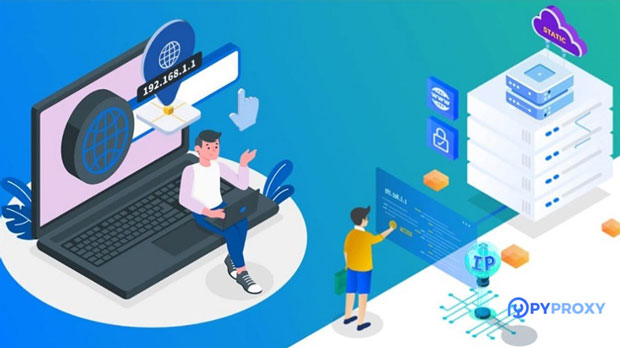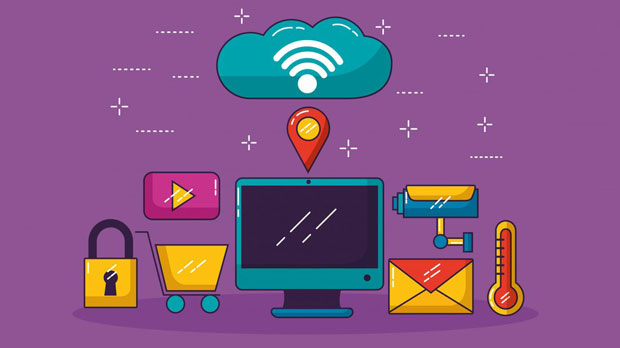When it comes to internet anonymity and bypassing geo-restrictions, proxies play a significant role. Among the types of proxies available, cheap static residential proxies and dynamic proxies are two popular choices. But how do these two differ, and which one suits your needs best? In this article, we will explore the characteristics, benefits, and applications of each type of proxy. By the end, you will have a deeper understanding of when to use cheap static residential proxies and dynamic proxies, depending on your specific use case. What Are Cheap Static Residential Proxies?Cheap static residential proxies refer to IP addresses that are provided by real residential ISPs. These proxies are static, meaning the same IP address is used for an extended period. In contrast to data center proxies, which use IPs from data centers, residential proxies utilize IPs from real devices (such as smartphones, computers, or routers) connected to an internet service provider.The term "cheap" here typically refers to affordability, often associated with bulk purchasing or discounts, without compromising on reliability or functionality. Despite being cost-effective, these proxies offer a high level of anonymity since they are harder to distinguish from regular user traffic, making them ideal for web scraping, market research, and social media management.Characteristics of Cheap Static Residential Proxies- Stability and Long-Term Use: Static residential proxies remain the same over time, offering a stable connection that doesn’t change every time you reconnect. This is particularly useful for tasks that require long sessions or continuous data collection.- Anonymity: These proxies provide a higher level of anonymity than data center proxies, as they come from real residential addresses. Websites are less likely to block or flag these IP addresses because they appear as regular user traffic.- Geolocation Flexibility: Since static residential proxies are linked to specific geographic regions, you can target specific locations when using them for web scraping or bypassing geo-restrictions.- Legitimacy: These proxies are associated with legitimate consumer devices, making it difficult for websites to differentiate them from real users. This makes them suitable for tasks that require less suspicion from websites, such as managing multiple accounts or engaging in social media automation.Benefits of Cheap Static Residential Proxies- Improved Privacy and Security: Static residential proxies shield your real IP address, ensuring better privacy and security while performing online activities.- Reduced Blocking and Detection: Due to the residential nature of these IPs, websites are less likely to detect and block your traffic, especially compared to data center IPs that are easily flagged.- Better for Long-Term Projects: Whether you're scraping data over extended periods or conducting long-term market research, static residential proxies provide consistent performance without the need to frequently rotate IPs.What Are Dynamic Proxies?Dynamic proxies, on the other hand, are IP addresses that change periodically, either after a set amount of time or after each request. These proxies are typically used to simulate different users interacting with a website, which is important for activities like web scraping, ad verification, and maintaining privacy while accessing geo-restricted content.Unlike static residential proxies, dynamic proxies are more flexible in terms of the frequency with which they change, providing a higher level of anonymity. They are mostly used for tasks where rotating IP addresses are essential, such as bypassing anti-bot measures or avoiding detection.Characteristics of Dynamic Proxies- IP Rotation: Dynamic proxies rotate IPs frequently, ensuring that the same IP address isn’t used for too long. This makes it more difficult for websites to block or trace the user’s activity.- Suitable for Web Scraping and Large-Scale Data Collection: Dynamic proxies are especially useful in situations where large volumes of data need to be scraped, or when performing automated tasks that require many different IP addresses.- Bypassing Anti-Bot Mechanisms: Many websites employ anti-bot systems that track IP addresses to prevent excessive scraping or automation. Dynamic proxies, by continuously changing IPs, help users bypass such restrictions.- Increased Flexibility: The frequent IP changes associated with dynamic proxies provide a higher level of security and anonymity, especially when it comes to tasks that could trigger suspicion, such as web crawling.Benefits of Dynamic Proxies- Enhanced Anonymity: The dynamic nature of these proxies makes it much harder to track and block users, as their IP addresses change regularly.- Effective for Large-Scale Projects: For businesses or individuals needing to perform high-volume activities like large-scale data scraping or marketing campaigns, dynamic proxies can be an excellent solution.- Helps Avoid Rate Limiting: Many websites limit the number of requests that can be made from a single IP address within a certain timeframe. By rotating IPs, dynamic proxies prevent hitting these rate limits, ensuring uninterrupted access.Key Differences Between Cheap Static Residential Proxies and Dynamic Proxies- IP Rotation: The primary difference between cheap static residential proxies and dynamic proxies is the IP rotation. Static residential proxies remain the same for a long time, while dynamic proxies rotate at regular intervals, providing a fresh IP address for each request or after a set period.- Anonymity: Static residential proxies generally offer better anonymity because they mimic the behavior of a regular user’s connection, making it difficult for websites to detect or block them. Dynamic proxies, while still providing anonymity, may not be as difficult to detect if the rotation pattern is too predictable.- Use Case: Static residential proxies are more suitable for long-term or persistent tasks where the same IP is required, such as managing multiple accounts or conducting market research over time. Dynamic proxies, however, are ideal for large-scale web scraping or automated tasks that need many different IPs to avoid detection.- Performance and Stability: Static residential proxies tend to offer more stability, as the IP doesn’t change. This makes them a better choice for activities that require consistent performance. Dynamic proxies, with their frequent IP changes, can sometimes result in more latency, although they excel in maintaining anonymity.Which Proxy Should You Choose?Choosing between cheap static residential proxies and dynamic proxies largely depends on your specific needs and the tasks you are planning to perform.- Choose Static Residential Proxies if you require long-term stability, high anonymity, and the ability to maintain a consistent IP address. They are ideal for web scraping, market research, and social media management.- Choose Dynamic Proxies if you need to perform tasks like large-scale web scraping, bypassing geo-blocking, or ad verification. Dynamic proxies are also useful when you need a high volume of IP addresses to avoid detection or rate limiting.Both cheap static residential proxies and dynamic proxies have their advantages depending on the intended application. Static residential proxies provide stability and anonymity, making them a great choice for long-term projects. In contrast, dynamic proxies offer flexibility and the ability to bypass anti-bot mechanisms, which is crucial for large-scale data collection or scraping. By understanding their key differences, you can make an informed decision and select the type of proxy that best suits your needs, ensuring greater efficiency and security in your online activities.
Sep 09, 2025



































































